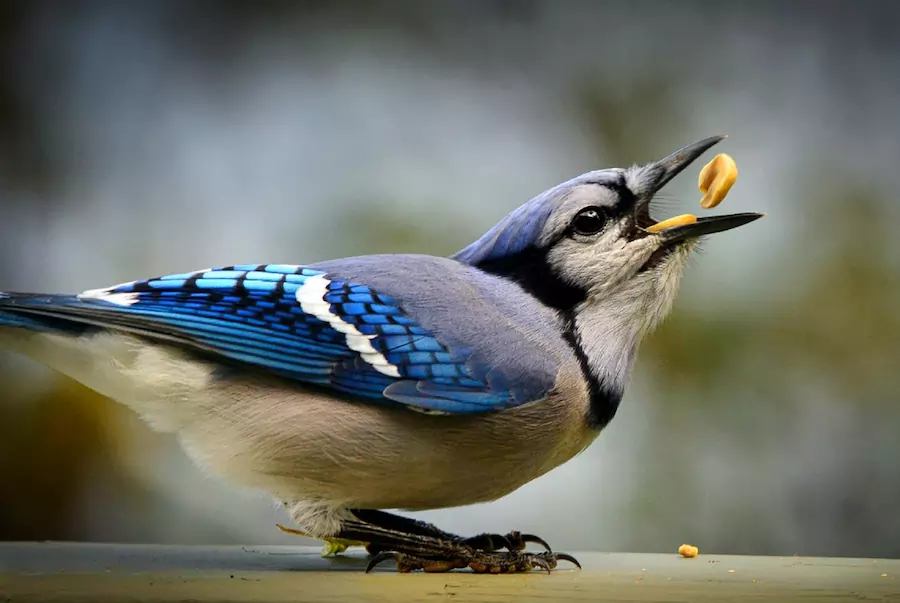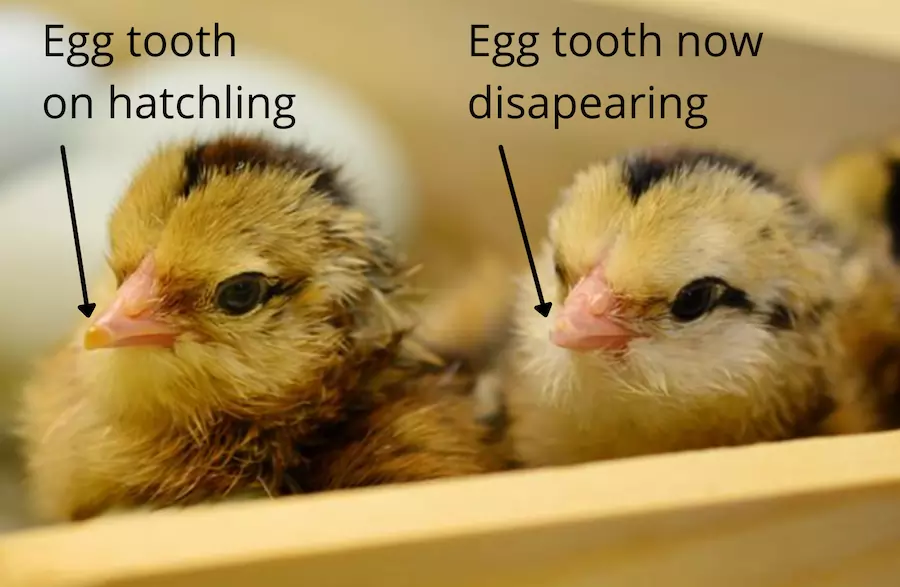The question of do birds have teeth is actually a common thing that people ask. Especially as teeth are seen as a requirement for most natural predators. But birds have evolved other advantages over and above teeth.
So let’s get into whether birds have teeth, starting with the quick response before heading into more detail
Birds lost their teeth through evolution. Growing teeth require a longer incubation period. Teeth weigh more which would further inhibit flight. Instead, beaks still enable birds to kill, dismember and eat prey, as well as facilitating preening, courtship, feeding young, and other advantages.
While it might seem like having a beak instead of teeth would put birds at a disadvantage. I’ll explain why, in many ways, the opposite is true. And why for birds, a beak is far more beneficial than teeth.
Do birds have teeth
The group of warm-blooded vertebrates constituting the Class Aves and essentially, the only animals with feathers are what we know as, and call birds.
We know that many of the birds are birds of prey. And while they kill numerous animals for food, they do also eat hard nuts as well. So how do they do this without teeth?

Even though birds do hunt and eat just like other creatures …and having teeth might seem like a necessity, their toothless mouths support them sufficiently to hunt and eat their prey and fulfill their needs, as well as provide other advantages.
Let’s discuss more on the reasons behind the toothless mouth of birds.
Why birds have no teeth
Evolution is convoluted, and thus, we can conclude that some specific traits are adaptive.
One of them is that birds have beaks rather than teeth. According to studies, Archosaurs, a group of reptiles, and Theropod dinosaurs, which had teeth, are considered to be the ancestors of modern-day birds.
Some 100 million years ago, reptile species began to evolve changes that set the foundation of modern-day aves. These included the loss of grasping hands, the widening of the pelvis to allow for egg-laying, and the overall loss of teeth from their reptilian predecessors.
To further support that birds were derived from reptilian ancestry, scientists discovered a beak from the fossil of a sea bird. The earliest found seabird with a beak lived 85 million years ago. This shows us the likely evolutionary link between modern-day birds and dinosaurs.
But birds still have a beak, so why is this still the case?
Why birds have a beak
Why birds have beaks is still a valid question, if they lost the production of teeth, then why would they need hardened beaks.
Sixty-six million years ago, the diversification of birds was enhanced further by the evolution of beaks.
Toothlessness isn’t just unique to birds. For example, some vertebrates such as anteaters and turtles also lack teeth. So, we can conclude that there is a common trait between all those organisms being toothless. But, what is that common trait?
Shorter incubation period
Studies tell us that tooth development is the reason for the long incubation period of dinosaurs, as developing teeth is generally a complicated process that can consume up to 60 percent of the time period for incubation.
In other words, where teeth form part of the growth stage within the embryo, the net result is that the growing bord had to remain in their egg for longer before hatching. This causes greater dangers in terms of their vulnerability to predation.
In short, teeth take longer to develop, increasing the incubation period. But less time spent in incubation means a reduced chance of predation or disease to both the egg and the parent.
Therefore…
The development of beaks and forgoing teeth becomes an advantage on a few levels. A shortened period of incubation due to not requiring the growth of teeth, lighter weight advantages for flying, and the growth, or retention of the beak as an alternative tool are all major reasons.
Hence, we can say that we effectively shorten the very long, sometimes dangerous, incubation period by omitting the time-consuming tooth formation.
However, I should also point out that the length of the incubation period as a factor does not apply to the toothlessness of all animals.
Turtles have an extended incubation period between forty-two to one hundred and two days, yet they are also toothless and have beaks.
While some prehistoric turtles did have teeth, modern turtles possess no teeth. Instead, all turtles now have very sharp beaks used for biting. Hatchlings emerge from their eggs with what is commonly called the egg-tooth or caruncle.
Do birds have teeth – birds don’t need teeth
In general, we can argue that birds actually do not require teeth. When it comes to hunting prey, birds have sufficiently sharp beaks and claws that are fit for purpose.
Having lighter weight beaks, that are suitable for the task of grasping, disarming, and even dismembering their prey is efficient enough for their needs.
Birds have beaks – instead of teeth
Having a beak is an external anatomical structure of Avians. While birds do lose the functionality that teeth can provide, a beak actually provides a lot more versatility to perform other tasks.
A beak can be used for:
- Killing prey
- Dismembering prey
- Eating
- Fighting
- Manipulating objects
- Preening
- Courtship
- Probing for food
- Feeding young
- Climbing (for birds such as parrots)
- Reduced body weight
Birds possess a particular muscle to aid digestion
So we know that birds do not have teeth, so then how do birds eat given that they cannot bite down on their food like humans and other predatory animals.
Teeth are often used for chewing, but birds are known to tear their food with their beaks, and then swallow the pieces whole. Lumps that are swallowed are aided in the digestion process.
Birds possess a muscular organ within the stomach, called the gizzard. The gizzard is responsible for digestion. This combined with their beak – which is often hooked or curved, helps them with the complete processing of their food.
The gizzard is surprisingly powerful. Sea birds are known to swallow seafood like clams whole, leaving it to the job of their gizzard to break down and digest the shells.
Given that birds have these multipurpose processing tools, Teeth now seem a wasteful extra part given that birds do not need them to chew.
Alternatives to teeth in some birds
Egg tooth in birds
A small, pointed structure is found in baby birds on the end of their beaks, commonly referred to as “egg tooth”. In hatchlings, this is predominantly used for and helps towards breaking the shell of the egg for hatching. However, the egg tooth disappears after a few days of emerging from the egg.
The below image shows a hatchling that still has its egg tooth intact, while the egg-tooth on another hatchling is disappearing within a few days.

Tomial tooth in some birds
Some birds have a tooth-like growth, which can be described as a toughened and sharp ridge at the end of their beak called ‘tomia’ which is present along the edge of their bills. Birds use these to hunt and consume their prey.
However, they can not be characterized as true teeth since they are not coated in enamel. Birds that possess Tomial teeth are usually birds of prey, such as:

The image added here of an eagle clearly shows its “hook-like” Tomial tooth
Serrated teeth
A number of birds have serrations along the edge of their bills, similar to that of a saw blade. This helps them grip food. But these are not the same structures that we call teeth in other animals, especially mammals, as birds cannot produce enamel or dentin that are the building blocks of teeth.
Tooth-like spines
Some birds have an alternative to teeth, such as penguins. Penguins instead have rear-facing flesh-like spines lining the inside of their mouth. These spines serve to guide fish meals toward the rear of the throat prior to swallowing.
Mutation of the gene controlling tooth formation
Investigations into the genes controlling tooth production revealed that six genes are crucial for forming both enamel and dentin in teeth.
The result found that all bird species had the same mutations of the required ingredient for tooth formation. The genes were considered “inactive”.
These inactive mutations are commonly present in all bird species, suggesting that they lost the ability to grow teeth millions of years ago.
Thanks to developmental biology and paleontology, there is still more to discover regarding the hidden mechanisms of birds that will help us understand the development of species and their traits.
More wildlife help…
I hope this has answered the question do birds have teeth. In fact, I hope it helped you to realize that for what birds need and do in their daily lives, the beaks they have actually provide a more versatile tool than having teeth.
Be sure to check out a wealth of other interesting articles on Ranger planet. You might like:
